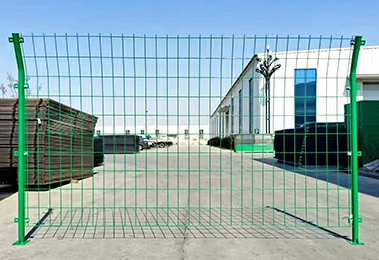 TEL:
+86-13102802206
TEL:
+86-13102802206
 Email:
fencenetting@china.com
Email:
fencenetting@china.com
 Language
Language
 TEL:
+86-13102802206
TEL:
+86-13102802206
 Email:
fencenetting@china.com
Email:
fencenetting@china.com
 Language
Language


The Versatility and Advantages of Stainless Steel Gabions
Gabions, essentially wire mesh containers filled with rocks, soil, or other materials, have a long-standing history in engineering and construction. Traditionally used for erosion control and to stabilize slopes, they have evolved in design and material usage over the years. Among the various types of materials used for gabions, stainless steel stands out due to its unique properties and advantages. This article explores the versatility and benefits of stainless steel gabions, demonstrating why they are a preferred choice in modern construction.
What are Stainless Steel Gabions?
Stainless steel gabions are wire mesh containers made from high-quality stainless steel that is resistant to corrosion, rust, and degradation. This material is often selected for its strength and durability, making it suitable for a variety of applications in challenging environments. Unlike traditional steel gabions that may require frequent maintenance and replacement due to rust, stainless steel gabions offer a longer lifespan and reduced long-term costs.
Key Advantages of Stainless Steel Gabions
1. Corrosion Resistance One of the most significant advantages of stainless steel is its inherent resistance to corrosion. This property is particularly beneficial in coastal regions or environments with high moisture content, where traditional metals may deteriorate rapidly. Stainless steel gabions withstand exposure to harsh chemicals and saline conditions, ensuring they remain intact and effective over time.
2. Aesthetic Appeal In addition to their functional benefits, stainless steel gabions offer a modern and sophisticated appearance. They are often used in landscaping and architectural designs where aesthetics play a crucial role. The sleek, shiny surface of stainless steel can complement various design styles, making it an attractive option for both commercial and residential projects.

3. Strength and Durability Stainless steel possesses excellent tensile strength, ensuring that gabions can withstand substantial loads and forces. This makes them suitable for applications such as retaining walls, sound barriers, and flood defenses. The durability of stainless steel also means that these gabions can survive extreme weather conditions, including heavy rainfall and high winds without compromising structural integrity.
4. Versatility in Applications Stainless steel gabions can be used in a wide range of applications beyond erosion control. They are ideal for creating decorative features in gardens, urban landscaping, and public parks. Additionally, they are utilized in the construction of noise barriers along highways and railways, as well as in the stabilization of riverbanks and shorelines.
5. Sustainability With growing concerns about environmental sustainability, stainless steel gabions present a green solution for various construction projects. They can be filled with natural materials or recycled waste, reducing the overall environmental impact. Furthermore, stainless steel is a recyclable material, making it an eco-friendly choice that contributes to sustainable building practices.
6. Ease of Installation The design and modular nature of gabions make them relatively easy to install compared to more traditional methods of construction. They can be prefabricated and transported to the site, significantly reducing construction time and labor costs. The installation process typically requires minimal heavy machinery, which can also help to decrease the overall environmental footprint of the project.
Conclusion
Stainless steel gabions are a versatile and innovative solution for modern construction challenges. Their combination of corrosion resistance, aesthetic appeal, strength, and sustainability positions them as an ideal choice for various applications, from erosion control to architectural design. As the demand for durable and environmentally friendly building materials continues to grow, stainless steel gabions are poised to play a key role in shaping the future of construction and landscape architecture. By integrating these advanced materials into projects, engineers and designers can ensure both the longevity and visual appeal of their work, benefiting both people and the environment.